CODVIP slots app
hb88 Carol de Leon’s Angkan serves fashion with a higher purpose
hb88
When Carol de Leon was a child, she dreamed of becoming an astronaut. She had a fascination for the cosmos, gazing constantly at the stars and the sun in the sky. But the math required for space flight just wasn’t for her. Instead, she soared in the fashion universe as a designer that took her across the globe, until eventually landing in the Philippines, where she built her own metaphorical planet: Angkan World.
View this post on Instagram
The energy shift: From mainstream to grassroots fashion
Born in Manila, she moved to Los Angeles at the age of four, where De Leon built an extensive background in fashion. As a designer in Los Angeles, she developed special products for catalogs for clients such as BCBG, Neiman Marcus, Nordstrom, and Anthropologie, often working in fashion capitals like Milan, Paris, London, and Tokyo. After years in the industry, she launched her own brand, Flogg Footwear—remember those chunky wedges in the 2010s that Rustan’s and other major retailers like Shopbop, Nordstrom, Bloomingdales, Macy’s carried?
Despite a roaring success, de Leon reached a tipping point.
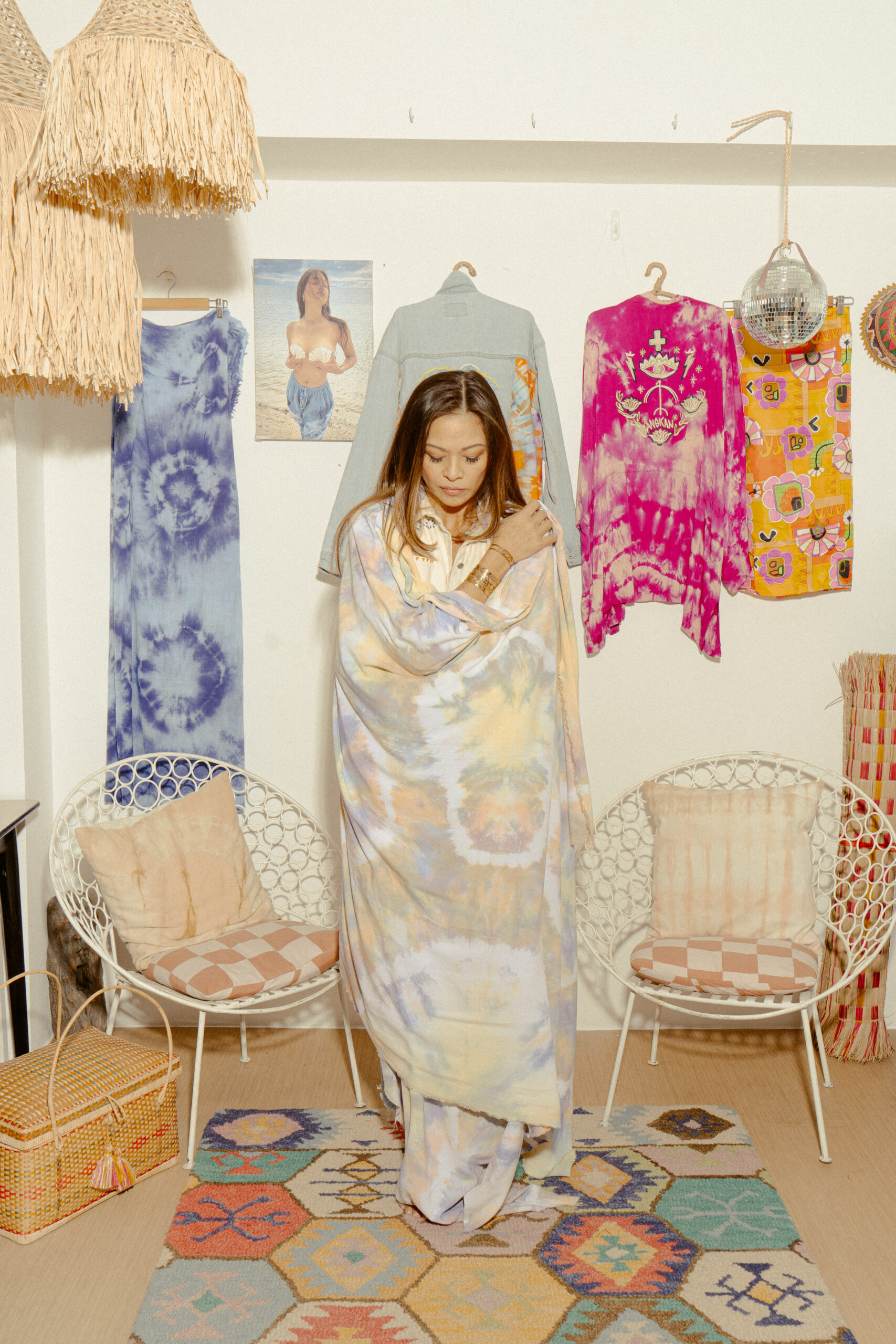 Filipina American designer Carol de Leon
Filipina American designer Carol de Leon
“It was popular, but I started to see how everyone was so demanding. When they have a good product, they just want more and more… Flogg was made in China. I asked the factories, ‘Where does the wood come from?’… They said, ‘Well, we’ve already used all the wood in China, and now we’re importing wood from Russia and France.’ Then they started bringing in logs that really looked like trees. I started feeling bad, cutting down all these trees. And then there were the conditions in which the workers were shaping the units for us. I had to rethink everything. It just didn’t feel right, so I stopped. I just stopped.”
“I reached a point where my spirituality was conflicting with my work in product development. Spirituality is different from materialism, right? As my spirituality became clearer to me, I started questioning my true purpose, especially after achieving so much in the fashion industry. At the same time, we were witnessing the peak of overproduction and fast fashion. Those factors really made me reflect on what my true purpose was.”
Angkan’s roots in Indigenous communities
About 10 years ago, de Leon began traveling to the Philippines to promote Flogg. During a Manila FAME show, de Leon overheard representatives from the Department of Trade and Industry (DTI) discussing the need for competitive designs on a global scale. She introduced herself and asked how she could help.
“I had several contracts working with Indigenous and marginalized communities, assisting MSMEs with product development and design. It really inspired me. And that’s when things started to shift.”
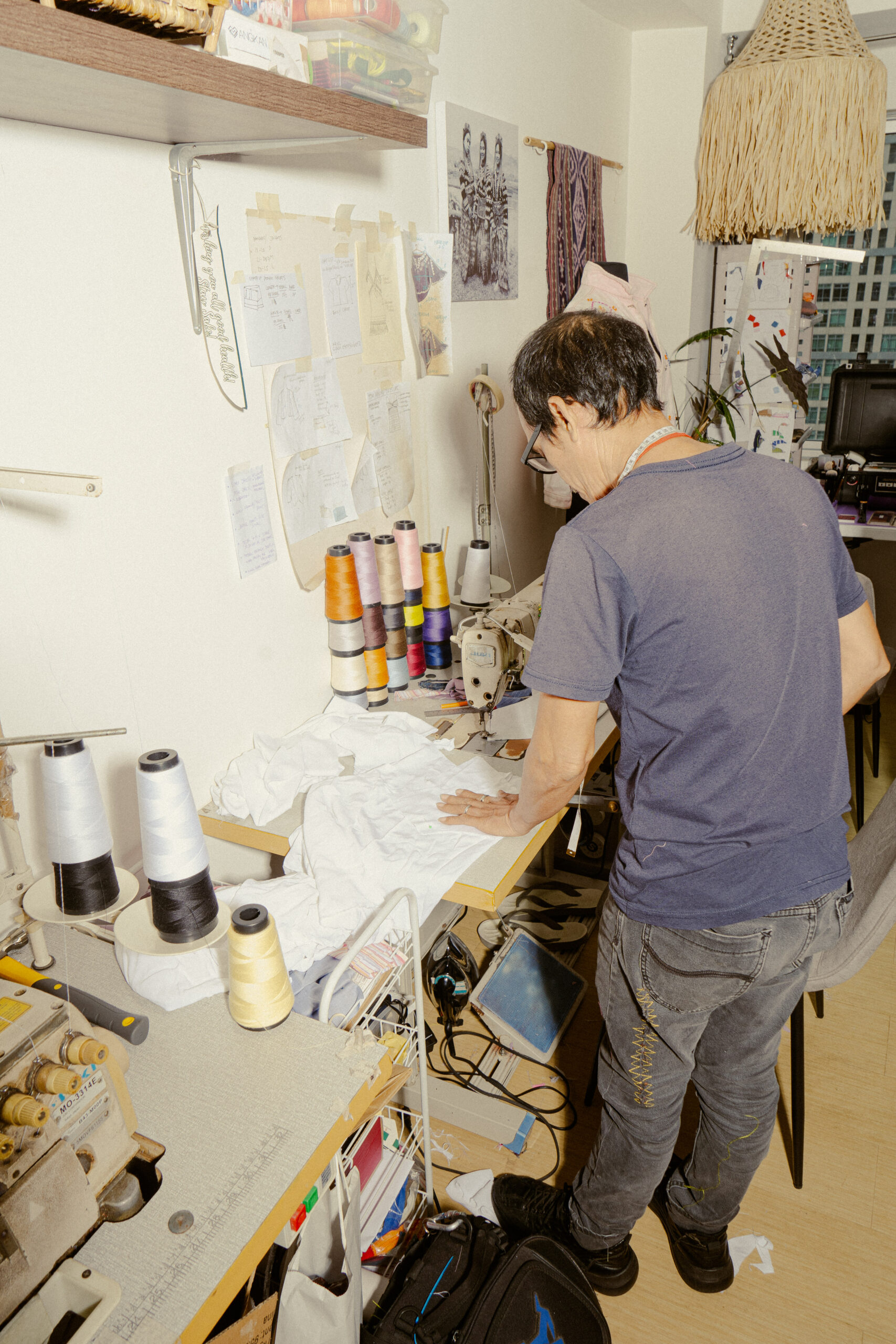 Angkan’s studio in Manila
Angkan’s studio in Manila
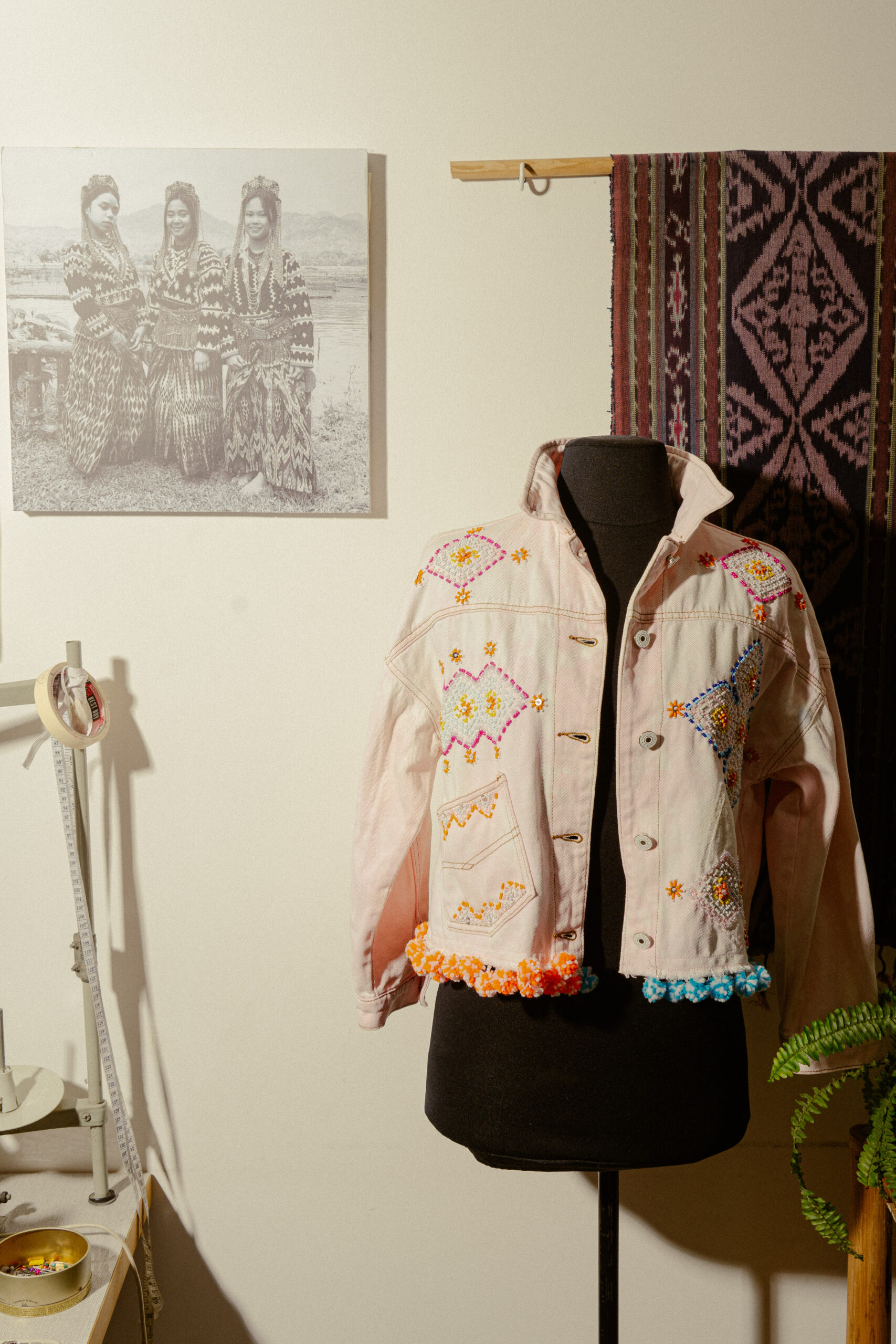
Through DTI, de Leon was given direct access to work with 11 Indigenous communities. In her studio, she proudly displays a picture of Lake Sebu from her visit to the T’boli communities. She recalls working with DTI to document the work travels to visit the Panay-Bukidnon people, then communities up north in Benguet to down south in Negros. “We really went up and down everywhere in the Philippines… It was such a blessing for me. As a Filipino American, I never had much education in Philippine history, but through this experience, I got to know my culture.”
Through her work with the Indigenous communities, de Leon established Angkan World, taken from the Tagalog word “Angkan,” which translates to family, tribe, or clan.
“What’s really awesome about the spirituality and energy I’ve found here in the Philippines is the connection with the Indigenous people. They are deeply attuned to this energy, which is scientifically rooted in them and closely tied to nature. Spirituality is energy, and it’s a science that our pre-colonial ancestors understood well. This connection is something I constantly think about.”
Fashion with intention
When designing for Angkan, de Leon prioritizes a mindful practice, attuned to positive energies all along the pipeline.
Using upcycled textile materials, she sketches her designs on the fabric before sending them to Indigenous communities to apply their own embroidery or textile artistry, native to the cultural traditions in their community. During the challenging lockdowns in the pandemic, Angkan provided sources of livelihood when opportunities were scarce.
As she runs her hand through her drawings, she explains the symbolism: a lightning bolt for energy, stars and the moon, cheerful rainbows, and shapes of the anito, which she translates onto a jacket with a feminine touch, calling it an “anita.” “The [anita] symbolizes the awakening of our inner babaylan, connecting with your energy, letting your light shine, and expanding your aura.”
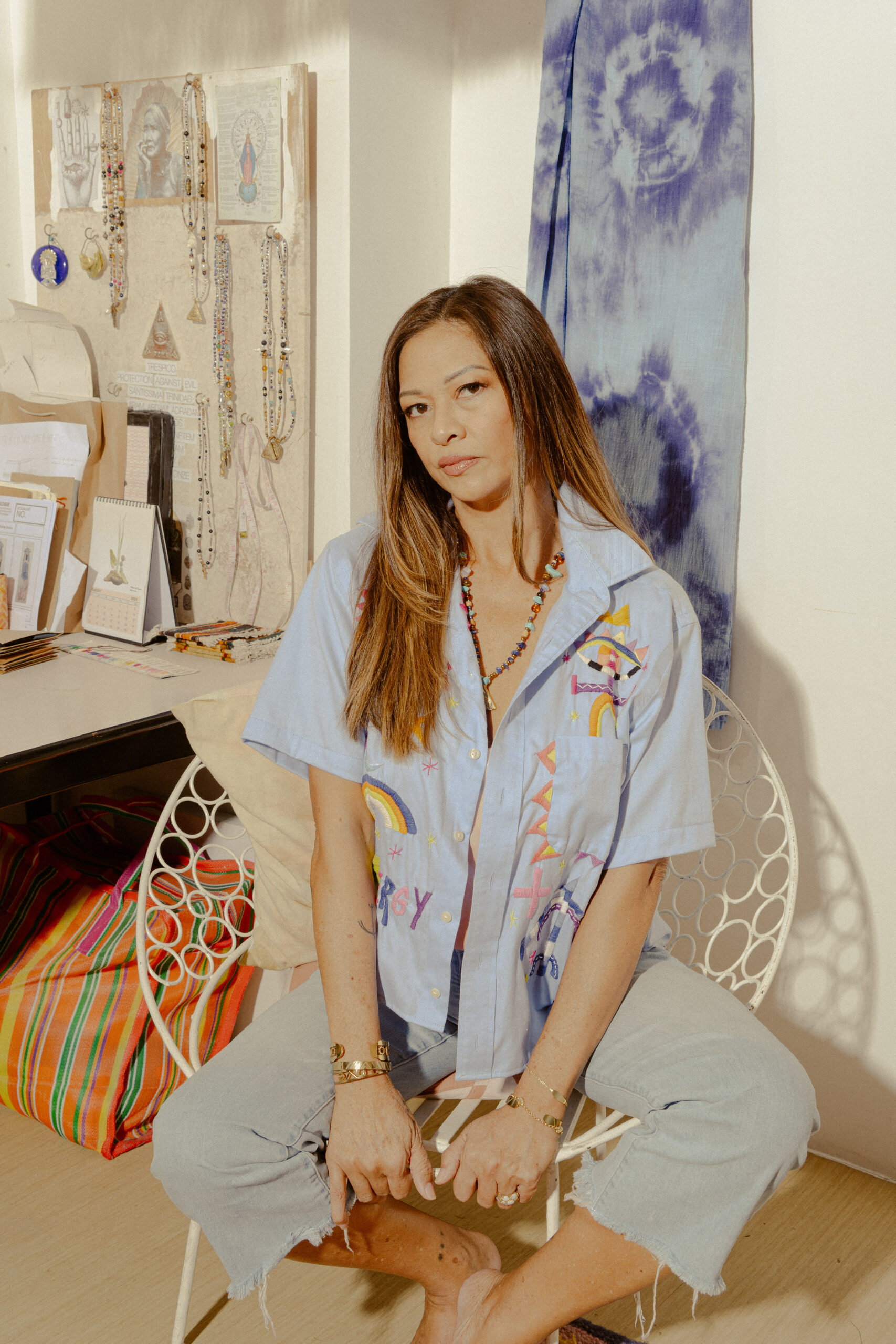 “What’s really awesome about the spirituality and energy I’ve found here in the Philippines is the connection with the Indigenous people. They are deeply attuned to this energy, which is scientifically rooted in them and closely tied to nature.”
“What’s really awesome about the spirituality and energy I’ve found here in the Philippines is the connection with the Indigenous people. They are deeply attuned to this energy, which is scientifically rooted in them and closely tied to nature.”
She sketches an eye to represent consciousness, accompanied by a crown. “That’s all of us. You can rise if you really expand your consciousness. We’re all connected in this way. Once you reach higher levels, there’s nothing else to discuss—you just look at each other, and you know. That’s your highest form of consciousness.”
“After the pandemic, we all realized how important it is to be closer to nature and how healing it can be. This is reflected in my work with Angkan.” De Leon points out the little mushrooms embroidered on the long-sleeved shirts, saying, “They’re anti-Big Pharma. It’s about turning to nature for healing instead of relying on pharmaceuticals.”
Boho banker shirts, upcycled denim, and natural dyes
“The banker shirts represent the ‘Wolf of Wall Street’ bankers—their main goal in life is to make as much money as quickly as possible. In the meantime, all of these banker shirts end up at Goodwill. They’re coming from first world nations and they’re being shipped to developing countries… and there’s such an excess that, I know for sure, in the Philippines, they’re getting burnt at the port. They’re not even getting to the people that need them.” In response, de Leon rescues the banker shirts (strictly 100 percent natural cotton), giving them new life at Angkan.
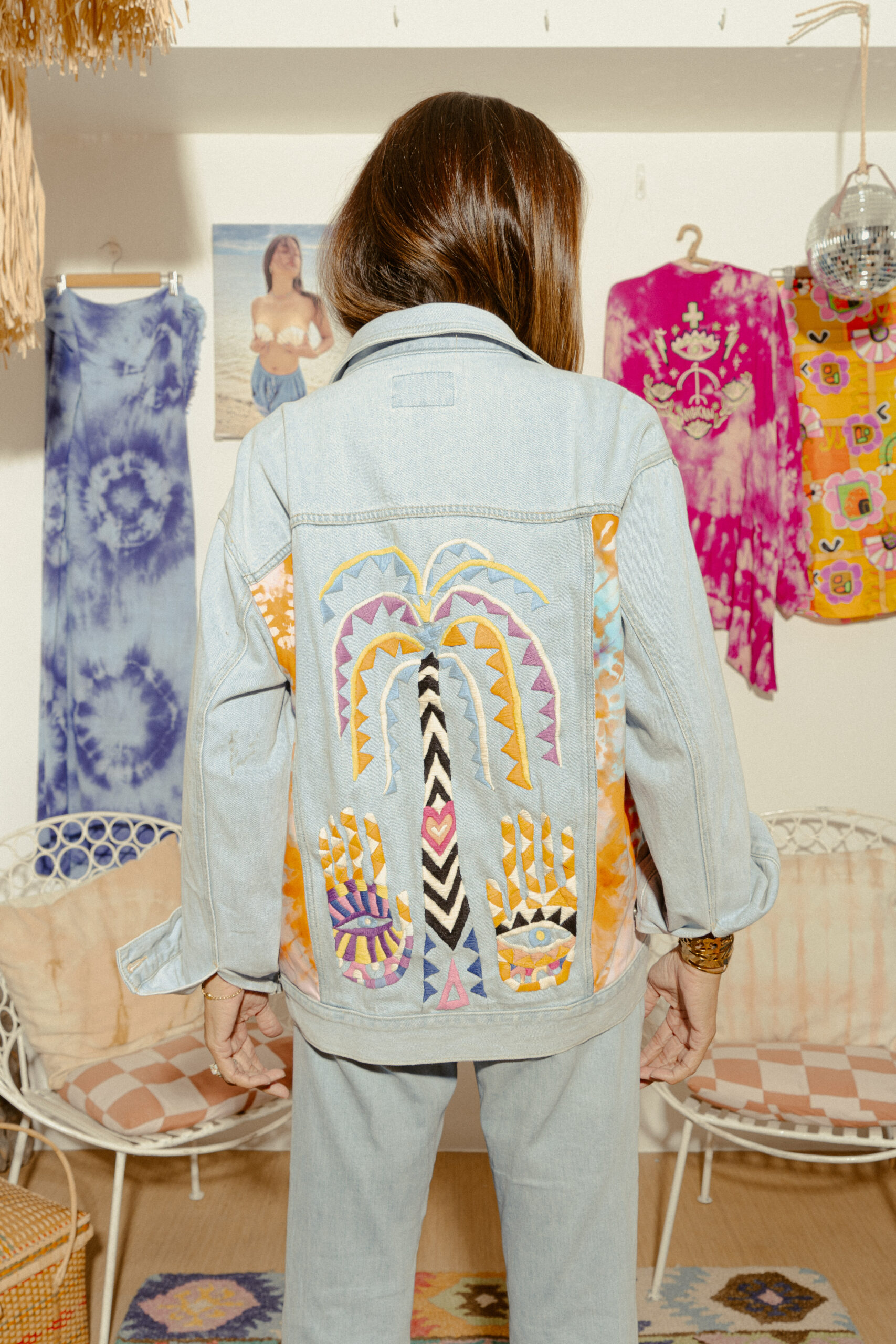 An upcycled, embroidered Angkan denim jacket
An upcycled, embroidered Angkan denim jacket
In her bags, de Leon incorporates Ilocos inabel retaso or scrap fabric from a friend, mixing in vintage cotton fringe from Italy. For the materials of her clothing, especially denim jackets, she uses natural Philippine indigo dye from Abra. “We use only natural materials—no synthetics—because it’s good for your skin and because it’s biodegradable. Everything we do is intentional, from every stitch to every drop of dye.”
“I’ve heard it from people I don’t even know—they say, ‘We love wearing your stuff. We feel happy.’ It’s like dopamine—all the colors just feel bright and happy. And you’re wearing all-natural materials, so you feel better right from the start.” De Leon references David Hawkins’ map of consciousness, explaining that each item has a vibrational frequency. For instance, vegetables like malunggay have high vibrational numbers, while junk food scores the lowest. Linen, she notes, has the highest vibration, followed by cotton—material choices she carefully considers when designing.
A few words on energies
De Leon is deeply in touch with her spirituality, drawing insights from various sources, including books and documentaries. She frequently references Hawkins, a pioneering researcher in consciousness. “I am spiritual, but I understand it more now in terms of science and energy. I believe it’s something we manage on a cellular level with our minds. It’s not something dictated by institutions with ulterior motives—it’s about our own growth and achieving higher consciousness.”
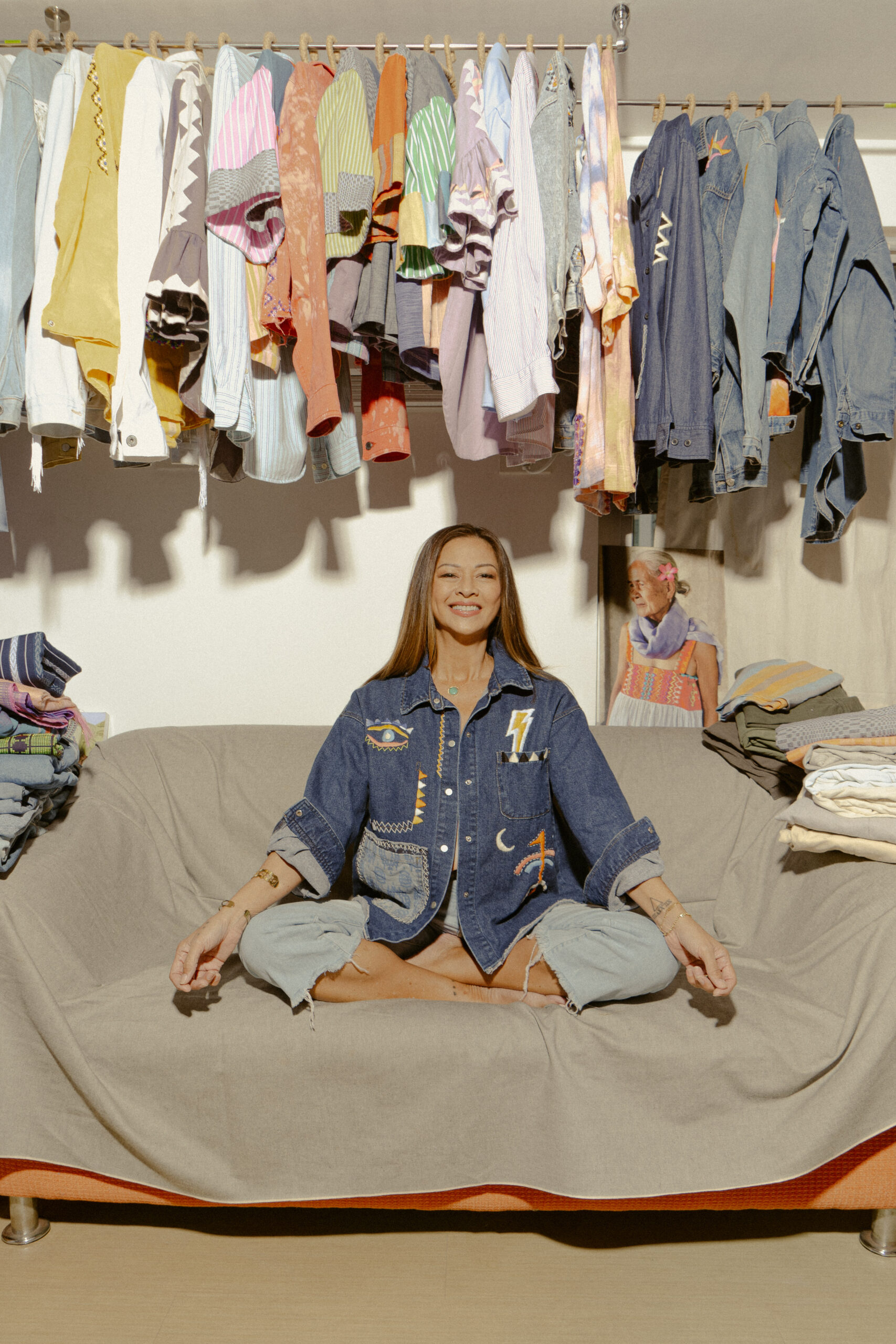 “This is really part of my life process, and sometimes it feels like a form of penance… but it’s far more rewarding. Helping people through fashion gives significant weight and meaning to design.”
“This is really part of my life process, and sometimes it feels like a form of penance… but it’s far more rewarding. Helping people through fashion gives significant weight and meaning to design.”
She brings out an energy cuff, one of the first creations of Angkan, when de Leon was invited by a company to design a jewelry line. Equipped with bio magnets, “These cuffs connect with the energy inside your cells,” she says.
“If you focus on your energy and intention, you can manifest things in your life. The purpose of the jewelry is to remind you daily to wake up with gratitude, set your intentions, and approach everything with full purpose.”
One cuff is engraved with a letter “V” for vibration, while another spells out the word “LOVE,” which she calls “the highest vibration.” Angkan’s “Bewitched” cuff is adorned with a single eye, flanked by suns and moons, referencing the pre-colonial Filipina babaylan. “I believe all women have a certain power and energy inside us that we can cultivate.”
Next steps
De Leon has had a long well-connected career in the global fashion industry. While her designs are made in the Philippines, the brand ships worldwide, part of her intention to share the good energies of Angkan on a global scale.
At the same time, the designer is considering relaunching Flogg in the future, potentially with a partner, and with a stronger emphasis on sustainability. “We’re in the Philippines and we’re known for our bakya. So I’m thinking, how can we do Flogg in that way and bring the bakya back?”
She also continues to design for other brands, particularly Italian shoes, providing art direction and collaborating with companies in Florence. “I’m really happy to be still involved in the design capacity on an international level. As a Filipina assisting Italians in their designs… I’m proud to be able to do that.”
**
It’s no small feat shifting from a successful career in global fashion to navigating the complexities of life in the Philippines. “This is really part of my life process, and sometimes it feels like a form of penance… but it’s far more rewarding. Helping people through fashion gives significant weight and meaning to design.”
Through her efforts to give back to Indigenous communities, perhaps De Leon’s quip about penance is truer than it seems, as she reaps the good karma she deserves, sharing an outpouring of positive energy through Angkan.
Photography by JT Fernandez
Creative direction by Nimu Muallam-Mirano
Produced by Pauline Mirandahb88
